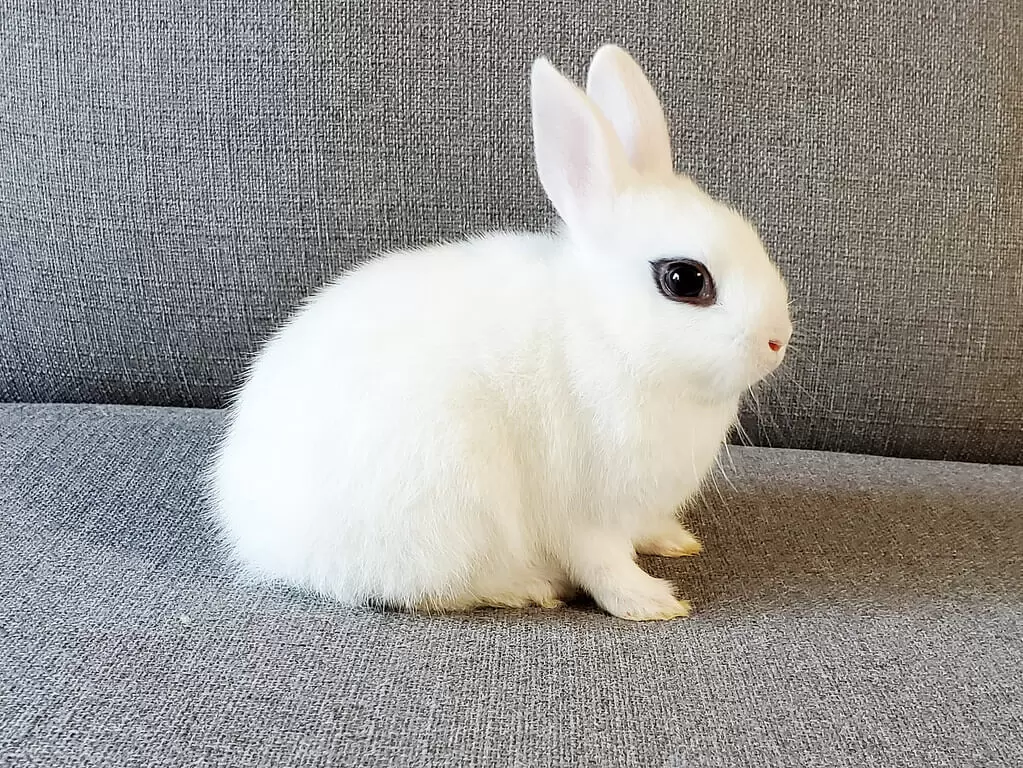- COUNTRY OF ORIGIN: Germany
- YEAR RECOGNIZED: 1984
- USES: Show
- WEIGHT: 3 pounds (1.4 kg) max., senior bucks and does
- BODY TYPE: Compact
- FUR TYPE: Rollback; soft, dense, fine, lustrous
- COLORS: White body with eye bands (circles) of black or chocolate
BROAD INTEREST IN DWARF BREEDS of rabbit prompted two German breeders — one in the former East Germany, the other in West Germany — to develop a small all-white, rabbit with distinct eye bands. Their experiments, conducted independently in the late 1970s, brought together several color varieties of Netherland Dwarfs with Blanc de Hotots. The two breeders exchanged stock in 1979, and their further experimentation resulted in small white rabbits with increased hardiness: the Dwarf Hotot (pronounced OH-TOE).
The breed was refined further by Elizabeth Forstinger, a Californian who purchased several Dwarf Hotots in Germany in 1980. Forstinger exhibited 15 Hotots at the ARBA National Show in 1981. The breed was accepted by the ARBA in 1984.
A Dwarf Hotot has the short, erect ears and compact conformation of a Netherland Dwarf, but its dark eye band on a field of snowy fur is distinctive. The Blanc de Hotot shares the Dwarf’s color scheme, but it is a much bigger rabbit, outweighing the 3-pound (1.4 kg) Dwarf by some 8 pounds (3.6 kg). Only two other breeds recognized by the ARBA, the Netherland Dwarf and the Britannia Petite, typically weigh less than the Dwarf Hotot.

